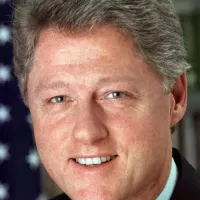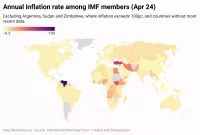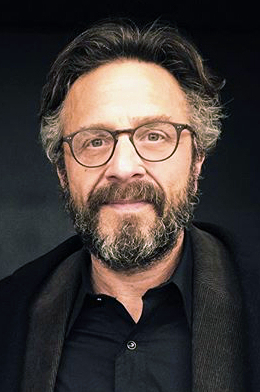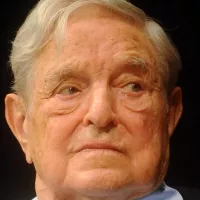The Oklahoma City bombing, a domestic terrorist attack on April 19, 1995, targeted the Alfred P. Murrah Federal Building. Orchestrated by Timothy McVeigh and Terry Nichols, the truck bombing resulted in 168 fatalities, over 680 injuries, and widespread destruction. It remains the deadliest act of domestic terrorism in U.S. history, causing an estimated $652 million in damages across 324 buildings. A massive rescue operation, involving local, state, federal, and international agencies, including FEMA and its Urban Search and Rescue Task Forces, was launched in response to the devastation. A rescue worker was killed during the operation by falling debris.
1977: McVeigh drives a Mercury Marquis
In 1977, McVeigh drove a yellow Mercury Marquis.
1977: Murrah Federal Building Built
In 1977, the Alfred P. Murrah Federal Building was constructed. The nine-story building housed 14 federal agencies, including the DEA, ATF, and the Social Security Administration.
1988: McVeigh and Nichols Meet
In 1988, Timothy McVeigh and Terry Nichols met at Fort Benning during basic training for the U.S. Army. McVeigh also met Michael Fortier there.
1989: Publication of Hunter
In 1989, William Luther Pierce, the founder and chairman of the National Alliance, a white nationalist group, wrote the novel "Hunter". A copy of the book was found in Terry Nichols's home.
1992: FBI Standoff with Randy Weaver at Ruby Ridge
In 1992, The Federal Bureau of Investigation (FBI) had a standoff with Randy Weaver at Ruby Ridge. McVeigh and Nichols were radicalized by white supremacist and antigovernment propaganda. They expressed anger at the federal government's handling of the 1992 Federal Bureau of Investigation (FBI) standoff with Randy Weaver at Ruby Ridge
1992: Ruby Ridge Incident
In 1992, the FBI standoff with Randy Weaver at Ruby Ridge took place. Timothy McVeigh and Terry Nichols were angered by the federal government's handling of the Ruby Ridge incident, which motivated the Oklahoma City bombing.
March 1993: McVeigh Visits Waco Site
In March 1993, Timothy McVeigh visited the Waco site during the standoff between the FBI and Branch Davidian members, and again after the siege ended. These events played a role in his decision to bomb a federal building.
1993: Waco Siege
In 1993, the Waco siege occurred, involving a 51-day standoff between the FBI and Branch Davidian members. The siege, which began with an ATF attempt to execute a search and arrest warrant, resulted in the deaths of David Koresh and 75 others. The event, along with the Ruby Ridge incident, influenced McVeigh's decision to bomb the Murrah Federal Building.
1993: World Trade Center bombing
The 1993 World Trade Center bombing was mentioned in the context of initial news stories hypothesizing that Muslim terrorists were behind the Oklahoma City bombing.
August 1994: McVeigh Obtains Kinestiks
In August 1994, Timothy McVeigh obtained nine binary-explosive Kinestiks from gun collector Roger E. Moore, and with Terry Nichols ignited the devices outside Nichols's home in Herington, Kansas, as part of their bomb preparation.
September 30, 1994: Nichols Buys Ammonium Nitrate Fertilizer
On September 30, 1994, Terry Nichols bought forty 50-pound bags of ammonium nitrate fertilizer from Mid-Kansas Coop in McPherson, Kansas, enough to fertilize 12.5 acres of farmland.
October 1994: McVeigh Shows Bomb Diagram to Fortiers
In October 1994, Timothy McVeigh showed Michael and Lori Fortier a diagram he had drawn of the bomb he wanted to build, containing more than 5,000 pounds of ammonium nitrate fertilizer mixed with liquid nitromethane and Tovex.
October 18, 1994: Nichols Buys Additional Fertilizer
On October 18, 1994, Terry Nichols bought an additional 50-pound bag of ammonium nitrate fertilizer from Mid-Kansas Coop in McPherson, Kansas.
December 1994: McVeigh and Fortier Inspect Murrah Building
In December 1994, Timothy McVeigh and Michael Fortier visited Oklahoma City to inspect the Alfred P. Murrah Federal Building, which would become the target of their bombing campaign.
December 1994: McVeigh scouts the Murrah Building
In December 1994, the FBI stated that McVeigh scouted the interior of the Murrah Building and likely knew of the day-care center before the bombing.
April 14, 1995: McVeigh Pays for Motel Room
On April 14, 1995, Timothy McVeigh paid for a motel room at the Dreamland Motel in Junction City, Kansas, in preparation for the bombing.
April 16, 1995: McVeigh and Nichols Drive to Oklahoma City
On April 16, 1995, Timothy McVeigh and Terry Nichols drove to Oklahoma City, where McVeigh parked a getaway car, a yellow 1977 Mercury Marquis, several blocks from the Murrah Federal Building.
April 19, 1995: Oklahoma City Bombing
On April 19, 1995, the Alfred P. Murrah Federal Building in Oklahoma City, Oklahoma, was bombed at 9:02 a.m. in a domestic terrorist attack. The bombing, perpetrated by Timothy McVeigh and Terry Nichols, resulted in 167 deaths and 684 injuries. The blast also destroyed or damaged 324 buildings, causing an estimated $652 million in damage. Extensive rescue efforts were undertaken by local, state, federal, and worldwide agencies, including FEMA's Urban Search and Rescue Task Forces.
April 21, 1995: McVeigh taken into federal custody
On April 21, 1995, federal agents took McVeigh into custody after a court hearing on gun charges. McVeigh requested an attorney and a crowd gathered outside the jail. Authorities denied his requests for a bulletproof vest or transport by helicopter, but did use a helicopter to transport him from Perry to Oklahoma City.
April 22, 1995: Clintons address the nation
On April 22, 1995, President Clinton and Hillary Clinton addressed the nation in a live television and radio broadcast, speaking with federal agency employees and their children about their concerns after the bombing.
April 23, 1995: Clinton speaks from Oklahoma City
On April 23, 1995, President Clinton spoke from Oklahoma City in the aftermath of the bombing.
April 25, 1995: James Nichols Arrested
On April 25, 1995, James Nichols was arrested in connection with the Oklahoma City bombing investigation, but was released after 32 days due to lack of evidence.
May 1995: Snell's Motive for Bombing
In May 1995, Fort Smith–based federal prosecutor Steven Snyder told the FBI that Richard Snell wanted to blow up the Oklahoma City building as revenge for the IRS raiding his home.
June 1995: Congress Enacts Legislation Requiring Chemical Taggants
In June 1995, Congress passed legislation requiring chemical taggants to be incorporated into dynamite and other explosives. This measure aimed to enable tracing bombs back to their manufacturers.
June 1995: DOJ Issues Vulnerability Assessment of Federal Facilities
In June 1995, the Department of Justice (DOJ) issued the Vulnerability Assessment of Federal Facilities, known as The Marshals Report, leading to a thorough security evaluation and risk classification system for over 1,300 federal facilities. The Alfred P. Murrah Building was classified as a Level 4 building, prompting 52 security improvements.
1995: McVeigh and Nichols Prepare Bomb in Ryder Truck
Between April 17-18, 1995, Timothy McVeigh and Terry Nichols removed the bomb supplies from their storage unit and loaded them into the Ryder rental truck. They then drove to Geary Lake State Park, where they nailed boards onto the floor of the truck to hold the barrels in place and mixed the chemicals to create the bomb.
1995: Federal offices resume operations
Within 48 hours of the attack in 1995, the targeted federal offices were able to resume operations in other parts of the city.
1996: Peaceful Resolution of Montana Freemen Standoff
In 1996, Timothy McVeigh believed the peaceful resolution of the Montana Freemen standoff was a positive impact of the Oklahoma City bombing.
1996: Antiterrorism and Effective Death Penalty Act Passed
In 1996, in response to the Oklahoma City bombing, the U.S. Congress passed the Antiterrorism and Effective Death Penalty Act, which limited access to habeas corpus in the United States, among other provisions. The Act also included legislation to increase protection around federal buildings.
1996: Domestic militias and antigovernment groups number
In 1996, there were approximately 858 domestic militias and other antigovernment groups.
1996: Murrah Federal Building Memorial Task Force Formed
In early 1996, the Murrah Federal Building Memorial Task Force, composed of 350 members, was established to formulate plans for a memorial commemorating the victims of the Oklahoma City bombing.
March 20, 1997: Victim Allocution Clarification Act signed
On March 20, 1997, President Clinton signed the Victim Allocution Clarification Act of 1997, allowing victims of the bombing and other future acts of violence the right to observe trials and offer impact testimony in sentencing hearings.
April 24, 1997: Opening statements in McVeigh's trial
On April 24, 1997, opening statements began in McVeigh's trial, with prosecutor Joseph Hartzler outlining McVeigh's motivations and the evidence against him. The prosecution presented 137 witnesses.
May 1, 1997: Tipton Testifies about McVeigh's Attempts to Buy Fuel
On May 1, 1997, Glynn Tipton, of VP Racing Fuels, testified about Timothy McVeigh's attempts to buy nitromethane and hydrazine at the Sears Craftsman Nationals. Tipton refused to sell McVeigh the fuel due to suspicions about his behavior.
May 1997: And Jesus Wept Statue Dedicated
In May 1997, the "And Jesus Wept" statue and sculpture were dedicated adjacent to the Oklahoma City National Memorial, commemorating the bombing event at St. Joseph's Old Cathedral.
June 2, 1997: McVeigh found guilty
On June 2, 1997, McVeigh was found guilty on 11 counts of murder and conspiracy in connection with the Oklahoma City bombing. He was later sentenced to death.
July 1, 1997: Winning Memorial Design Chosen
On July 1, 1997, a 15-member panel unanimously chose the winning design for the Oklahoma City National Memorial from 624 submissions.
1997: Federal trial of Terry Nichols
In 1997, Terry Nichols faced a federal trial.
1997: Bombers Tried and Convicted
In 1997, Timothy McVeigh and Terry Nichols, the perpetrators of the Oklahoma City bombing, were tried and convicted for their crimes.
May 27, 1998: Michael Fortier sentenced
On May 27, 1998, Michael Fortier was sentenced to 12 years in prison and fined $75,000 for failing to warn authorities about the Oklahoma City bombing. He had agreed to testify against McVeigh and Nichols in exchange for a reduced sentence and immunity for his wife.
June 4, 1998: Nichols sentenced to life in federal trial
On June 4, 1998, Terry Nichols was sentenced to life in prison without parole after being found guilty in his federal trial of conspiring to build a weapon of mass destruction and of eight counts of involuntary manslaughter of federal officers.
April 2000: Bill Clinton Regrets Decision to Storm Branch Davidian Compound
In April 2000, Bill Clinton expressed regret over his decision to storm the Branch Davidian compound. McVeigh viewed this as a positive impact of the bombing.
April 19, 2000: Oklahoma City National Memorial Dedicated
On April 19, 2000, President Clinton dedicated the Oklahoma City National Memorial, designed by Hans and Torrey Butzer and Sven Berg, exactly five years after the bombing.
2000: State trial of Terry Nichols
In 2000, the State of Oklahoma sought a death-penalty conviction against Terry Nichols on 161 counts of first-degree murder.
May 2001: Justice Department announces FBI error
In May 2001, the Justice Department announced that the FBI had mistakenly failed to provide over 3,000 documents to McVeigh's defense counsel, leading to a postponement of his execution.
June 11, 2001: McVeigh Executed
On June 11, 2001, Timothy McVeigh was executed by lethal injection at the U.S. federal penitentiary in Terre Haute, Indiana, for his role in the Oklahoma City bombing.
2001: Political Dignitaries Attend Service and Give Speeches
In 2001, Vice President Dick Cheney, former President Clinton, Oklahoma Governor Brad Henry, Frank Keating, Governor of Oklahoma at the time of the bombing, and other political dignitaries attended a service and gave speeches in which they emphasized that "goodness overcame evil".
2001: Federal Highway Administration Proposes Metropolitan Evacuation Routes
In 2001, following the September 11 attacks and considering events like the Oklahoma City bombing, the Federal Highway Administration proposed creating evacuation routes for major metropolitan areas to facilitate emergency access and civilian evacuation, aiming to reduce casualties.
May 26, 2004: Nichols found guilty in state trial
On May 26, 2004, Terry Nichols was found guilty on all charges in his state trial, including 161 counts of first-degree murder, but the jury deadlocked on the death penalty, resulting in a sentence of 161 consecutive life terms without parole.
2004: Domestic militias and antigovernment groups decline
By 2004, the number of domestic militias and other antigovernment groups had dropped to 152.
2004: Nichols Sentenced to Life
In 2004, Terry Nichols was sentenced to life in prison for his involvement in the Oklahoma City bombing.
March 2005: Additional explosives found at Nichols's former house
In March 2005, FBI investigators found additional explosives in a buried crawl space at Terry Nichols's former house, acting on a tip from Gregory Scarpa Jr.
2005: FBI report on right-wing terrorism
A 2005 Federal Bureau of Investigation report stated that the bombing "brought the threat of right-wing terrorism to the forefront of American law enforcement attention."
2005: Murrah Fund Spending
By 2005, $18 million of the donations to the Murrah Fund remained, with some of the money earmarked to provide a college education for each of the 219 children who lost one or both parents in the bombing.
2005: Tenth Anniversary Observances of the Oklahoma City Bombing
In 2005, the city held 24 days of activities for the tenth anniversary of the Oklahoma City bombing, including the National Week of Hope from April 17 to 24. The observances began with a service at 9:02 a.m., marking the moment of the bombing, with 168 seconds of silence and the reading of the names by children.
January 20, 2006: Michael Fortier released from prison
On January 20, 2006, Michael Fortier was released from prison and entered the Witness Protection Program under a new identity.
2008: Honeywell Develops Non-Detonable Fertilizer
In 2008, Honeywell, with assistance from the Department of Homeland Security, developed Sulf-N 26, a nitrogen-based fertilizer that would not detonate when mixed with fuel oil. This fertilizer uses ammonium sulfate to reduce explosiveness.
2009: Limited Legislation on Ammonium Nitrate Fertilizer
As of 2009, only Nevada and South Carolina required identification for purchasers of ammonium nitrate fertilizer, despite calls for federal legislation to mandate identification and sales records.
April 6, 2010: House Bill 2750 Signed Requiring Bombing to be Entered into School Curriculum
On April 6, 2010, House Bill 2750 was signed by Governor Brad Henry, mandating the inclusion of the Oklahoma City bombing in the school curriculum for Oklahoma, U.S., and world history classes.
April 2010: Prosecutor questions McVeigh's motives
In April 2010, Joseph Hartzler, the prosecutor at McVeigh's trial, questioned why McVeigh would pass over a prior target building because of a florist shop but not notice the day-care center, credit union, and Social Security office at the Murrah building.
2024: Bomb Cost Adjusted for Inflation
In 1995, The bomb cost about $5,000 (equivalent to about $11,000 in 2024) to make.
2025: NHRA Nitromethane Regulations
As of 2025, the NHRA requires competitors to store nitromethane at the series' official fuel supplier, VP Racing Fuel. Each purchase of nitromethane is logged by the supplier and dispensed to the specific team.
Mentioned in this timeline
The United States of America is a federal republic located...

Bill Clinton the nd U S President - served as...

Hillary Diane Rodham Clinton is an American politician lawyer and...

Timothy James McVeigh was a domestic terrorist from the United...

Inflation in economics signifies an increase in the average price...

News encompasses information about current events disseminated through various media...
Trending

2 days ago Marc Maron reveals his long-standing feud with Jon Stewart was fueled by insecurity.

23 minutes ago Joseph Quinn's 'Stranger Things' Season 5 Absence Confirmed by Duffer Brothers: No Return
24 minutes ago Lindsey Halligan's Signal exchange with Anna Bower revealed, leading to controversy and publication.

24 minutes ago ATP Basel Day 2 Predictions: Wawrinka vs Kecmanovic, Mpetshi Perricard vs Fonseca

1 hour ago Beyond Meat Stock Soars: Meme Traders Spark GameStop-Like Rally, Up Over 100%
2 hours ago Sarkozy's Incarceration: Macron's Visit, Freedom's End, and Supporters' Protest Against Justice.
Popular

Charlie Kirk is an American right-wing political activist entrepreneur and...

Candace Owens is an American political commentator and author known...

Paula White-Cain is a prominent American televangelist and key figure...

William Franklin Graham III commonly known as Franklin Graham is...

George Soros is a Hungarian-American investor and philanthropist with a...

XXXTentacion born Jahseh Dwayne Ricardo Onfroy was a controversial yet...